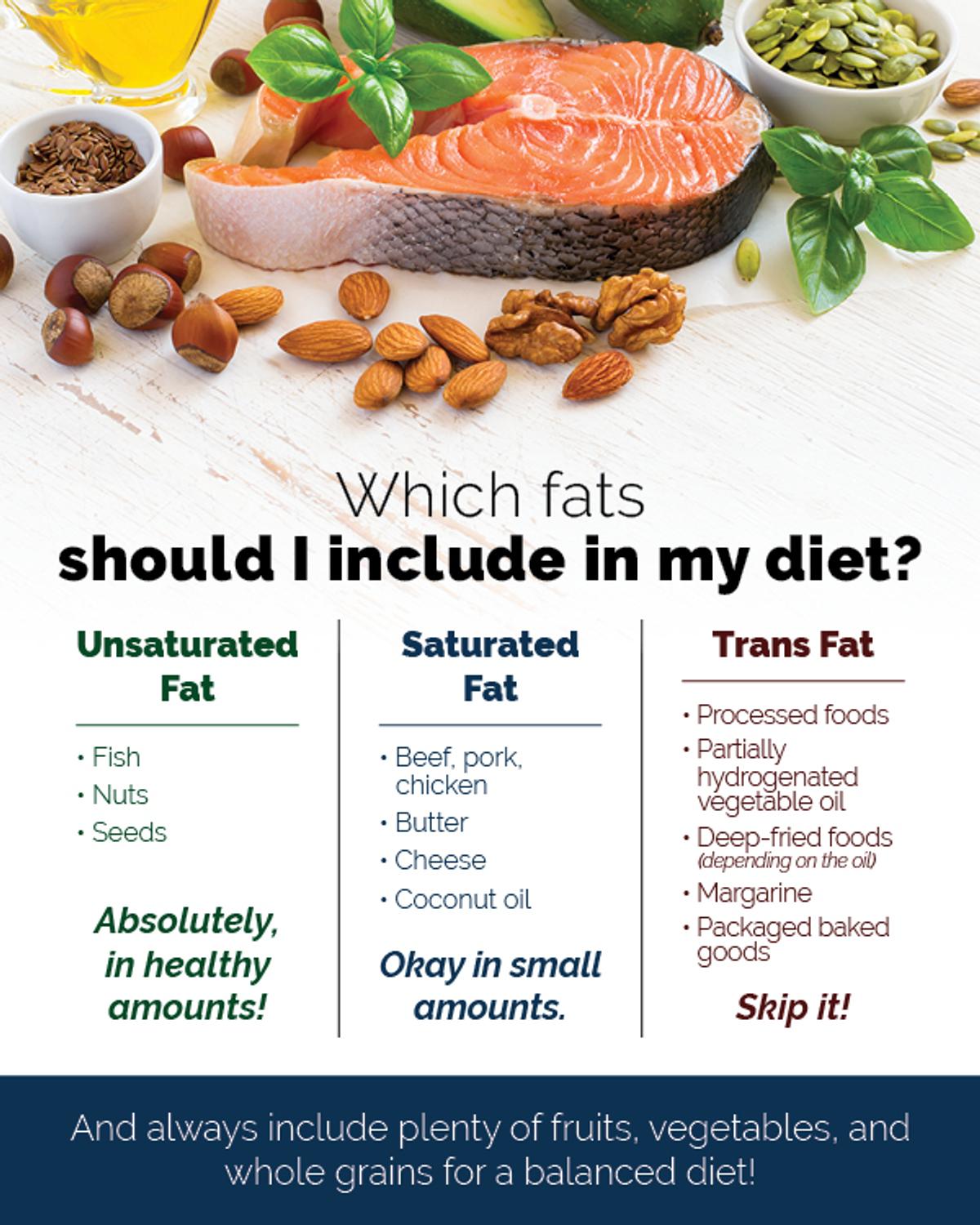
Explaining Fats' Function to Clients
Reading Time: 3 minutes
BY: ISSA
DATE: 2018-09-14
Dietary fat is a common topic in any conversation on fitness and nutrition. In fact, you've probably taken part in many discussions about working out to lose fat or eating a low-fat diet to lose weight. Most of the time it seems like clients are trying to have less fat in their lives. But do you ever discuss fats' function in a diet and why everyone needs them? Not all fats are bad. In fact, fat is essential to some of the functions within your body. Further, too much or too little fat can significantly impact our bodies, so it's important to understand which types of dietary fat clients should include and which they should avoid.
Trans fat
Trans fat occurs naturally in small amounts in a few meat and dairy products, but, more commonly, it's manufactured by food companies. This manufactured version goes in foods for better taste, more satisfying texture, and a lengthened shelf life. The naturally occurring trans fat won't cause you much of a ruckus if you keep it limited to lesser amounts. However, the manufactured version of trans fat has rightfully earned a reputation as a bad fat. This fat can improve the taste of food but does not improve much within the body. Trans fat can cause quite a few health risks, some of which include:
Increased bad cholesterol
Decreased good cholesterol
Coronary heart disease
Cancer
Alzheimer's disease
Suppression of bile acids
In general, suggest clients try to keep trans fat out of their diet—especially the type found in processed foods. For example, have them skip the boxed baked goods that were probably made with partially hydrogenated oil, a common source of trans fat. In fact, they should try to avoid anything with partially hydrogenated oil completely. When possible, remind them to always choose natural, unprocessed foods.
Saturated fat
Next, teach clients to assess the saturated fat in their diet. In limited quantities, certain saturated fats, such as stearic acid, can help lower LDL cholesterol levels. Saturated fat is slightly better than trans fat, but clients still don't want to include too much of it in their diet. A diet high in saturated fat, especially one that also includes high levels of sugar and processed carbohydrates can pose a variety of risks, such as:
Increased cholesterol
Cardiovascular disease
Poor blood viscosity
Breast cancer
Diabetes
Suggest your clients start considering alternatives to common saturated fats, such as swapping regular beef for lean beef, or even skipping the beef in favor of fish. Also, remind them to balance fat intake with plenty of healthy fruits, vegetables, and whole grains. These foods are naturally low in the bad fats and are filled with other nutrients vital to health.
Unsaturated fat
And, finally, get everyone should get to know unsaturated fat, known as "healthy fat." As the name implies, unsaturated fat can support a variety of healthy functions in the body. This isn't to say clients can eat as much as they want, because this fat is still high in calories, but it's the best type of fat to choose over the other options.
Recommend they try to include omega-6 and omega-3 fatty acids. Omega-6 is in foods like flax oil, nuts, and seeds (e.g., pumpkin seeds); and omega-3 fatty acids are in foods such as fish, avocados, and leafy vegetable (e.g., spinach). These two fatty acids work best in a 1:1 relationship. However, many current diets include much higher levels of omega-6 than omega-3, which can bring on risks such as inflammation or blood clotting. So, be sure clients assess and rebalance the ratio to maximize the benefits these fatty acids can provide on the following:
Blood vessel health
Inflammation
Blood triglycerides and cholesterols
Metabolism
Cardiovascular function
Nervous system function
Overall, eating a balanced diet focused on natural, unprocessed, whole foods is the best bet for optimal health. Remember to recommend clients cut out trans fat, reduce saturated fat, and keep unsaturated fat at a healthy level.
If you're interested in learning more about the nutrients that keep your body running smoothly, check out the ISSA's comprehensive course on Fitness Nutrition.

Click HERE for a quick list of these fats to help you and your clients maintain a healthy diet.